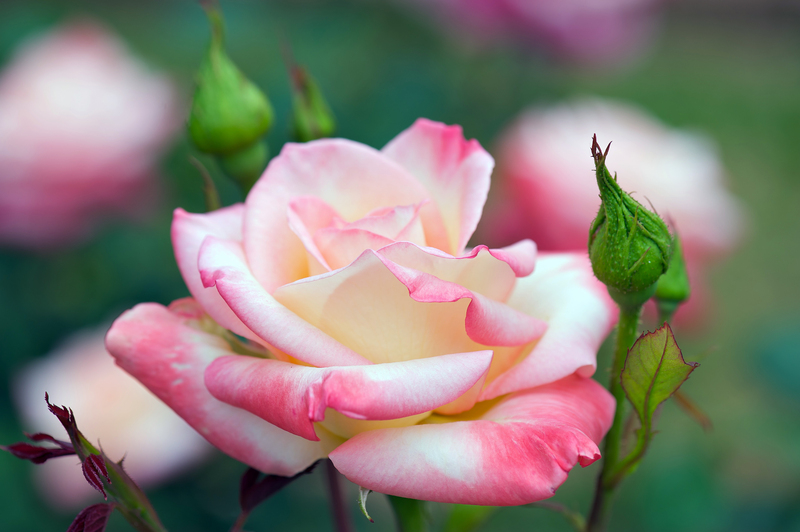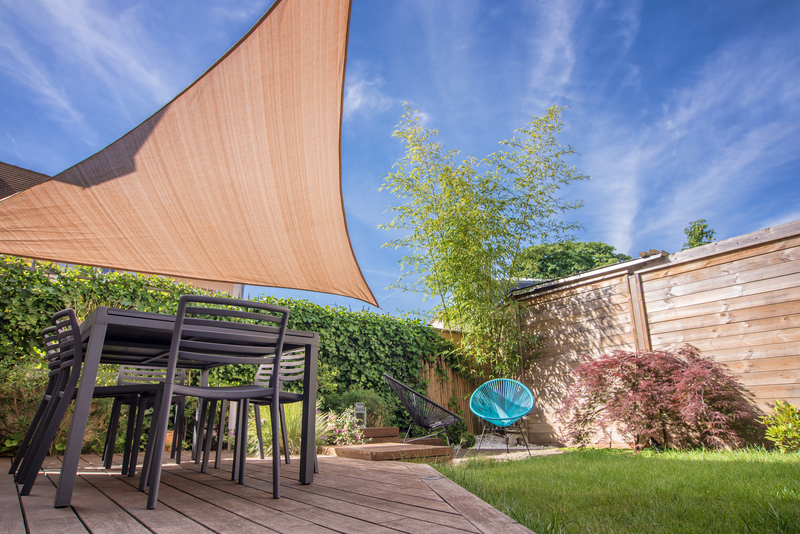A Guide to Successful Container Gardening
Posted on 11/09/2025
A Guide to Successful Container Gardening
Are you eager to unleash your green thumb but limited by space or poor soil? Container gardening is an excellent solution for urban dwellers, balcony owners, and even those who simply want to add a splash of color to their patio. This comprehensive guide to container gardening will cover everything you need to know, from selecting the right pots to keeping your plants healthy and thriving year-round.
Why Choose Container Gardening?
Container gardening offers unmatched flexibility and unlimited creativity for plant enthusiasts. Whether you're growing vegetables on your balcony, flowers by the front door, or herbs on your kitchen windowsill, containers allow gardeners to design and re-design their garden as desired. Here are some reasons why so many people are converting to container gardens:
- Space-Saving: Ideal for small areas or urban settings without garden beds.
- Mobility: Move your plants to catch the sun, evade frost, or simply refresh your decor.
- Soil Customization: Easily tailor the potting mix to each plant's requirements.
- Pest and Disease Management: Containers offer easier control over harmful pests and diseases.
- Year-Round Gardening: Continue gardening indoors during colder months.

Selecting the Best Containers for Your Garden
One of the first steps in successful container gardening is choosing the appropriate vessel for your plants. The right container can mean the difference between flourishing growth and plant frustration. Here are some crucial considerations:
Material Choices
- Terracotta: Classic and beautiful, but can dry out quickly in hot weather. Ideal for people who are attentive waterers.
- Ceramic: Glazed ceramics retain moisture better and add color and style.
- Plastic: Lightweight, inexpensive, and excellent for retaining moisture; perfect for balconies.
- Wood: Adds a rustic look; ensure it's rot-resistant (like cedar). Avoid chemically treated wood for edible plants.
- Metal: Durable and stylish, but can heat up rapidly, affecting root health.
Container Size
A common mistake in beginner container gardening is choosing pots that are too small. Larger containers have several advantages: they dry out more slowly, provide ample space for root development, and offer room for multiple plants. As a general rule, select a pot that is at least 12 inches across and 12 inches deep for most vegetables and flowers.
Drainage Matters
*All containers must have drainage holes*. Without proper drainage, water can pool at the bottom, causing roots to rot. If your favorite pot doesn't have holes, drill some yourself or use it as a decorative cachepot, placing a smaller container with drainage holes inside.
Choosing the Right Soil for Container Planting
A key difference between in-ground and container gardening is the importance of premium-quality soil. Regular garden soil is usually too dense and may harbor pests or diseases. Instead, opt for a purpose-made potting mix, which is specially blended to support robust plant growth in pots.
- Lightweight: Good potting soils are airy, allowing proper root breathing and water drainage.
- Nutrient-Rich: Some mixes come pre-fertilized, helping new plants get established.
- Soil Amendments: Coco coir, perlite, or vermiculite often boost water retention and aeration.
For specialized plants, such as cacti or orchids, choose a specific soil blend suited to their needs.
Best Plants for Container Gardens
Virtually any plant can thrive in a pot with the right care, but some plants are particularly well-suited to container life. Here are top picks for your container gardening success:
Edible Plants
- Herbs: Basil, rosemary, thyme, parsley, and mint all flourish in pots. Harvest them fresh for maximum flavor.
- Salad Greens: Lettuce, spinach, and arugula are shallow-rooted and grow quickly.
- Tomatoes: Compact, bushy (determinate) varieties, cherry, or grape tomatoes, yield heavily in large containers.
- Peppers and Chillies: Like tomatoes, peppers thrive in containers with ample sunlight.
- Radishes and Carrots: Short-root varieties do well in deep pots.
Ornamental Plants
- Petunias and Geraniums: Bright, bushy, and reliable for season-long color.
- Marigolds: Hardy, colorful, and pest-repelling.
- Begonias and Impatiens: Ideal for shade.
- Ferns and Hostas: Thrive in low-light corners.
Unusual and Creative Choices
- Succulents and Cacti: Minimalist, drought-loving, and eye-catching for sunny spaces.
- Climbing Plants: Sweet peas and nasturtiums can trail attractively from hanging baskets or climb trellises.
How to Plant in Containers: Step-by-Step Guide
Planting in containers is straightforward, but following these steps will boost your chances of beautiful, thriving plants.
1. Prepare the Pot
- Check and clean your container.
- Place pieces of broken pot or mesh over drainage holes to prevent soil loss.
2. Add Potting Mix
- Fill the container with potting mix, leaving 1-2 inches below the rim to allow for watering.
3. Position Plants
- Arrange your plants while still in their nursery pots for best effect.
- Mix taller plants in the center or back, with trailing or cascading plants along the edges.
4. Plant and Water
- Remove plants from their pots, gently loosen the roots, and nestle them into the potting mix.
- Fill gaps and press the soil gently.
- Water thoroughly.
Watering Container Plants Correctly
Consistent watering is crucial to healthy container plants. Because pots dry out faster than ground soil, especially in hot weather or windy locations, you'll need to check your containers daily.
- Check for moisture: Insert your finger about 1 inch into the soil. If it feels dry, it's time to water.
- Water thoroughly: Water until it drains out of the bottom, ensuring entire root visibility.
- Morning or evening: Water during cooler periods to reduce evaporation.
Container plants in hot weather or sun-exposed areas may need watering more than once a day. Consider using self-watering pots or watering globes for convenience.
Fertilizing and Feeding Your Container Garden
Because frequent watering leaches nutrients from pots, container-grown plants benefit from regular feeding.
- Slow-release fertilizers: Mixed into the potting mix, these provide steady nutrition over weeks.
- Liquid fertilizers: Added to water every few weeks, supplement essential nutrients.
- Compost tea: An organic alternative, offering a gentle boost.
*Follow the fertilizer's instructions carefully.* Overfeeding can harm plant roots or promote leafy growth at the expense of blossoms or fruit.
Pest and Disease Management in Containers
Even in containers, pests and diseases can threaten your garden. However, maintaining healthy plants and practicing vigilance makes control much easier.
- Inspect regularly: Check leaves and stems for spots, holes, insects, or sticky residue.
- Remove affected parts: Snip away damaged or diseased leaves promptly.
- Encourage beneficial insects: Ladybugs and lacewings naturally prey on pests like aphids.
- Use organic sprays: Neem oil, insecticidal soap, or homemade garlic spray are effective treatments.
Design Tips for Stunning Container Displays
Creating an eye-catching container display is as much about artistry as horticultural know-how. Try these tips for maximum impact:
- Choose complementary colors for a harmonious look, or bold contrasts for excitement.
- Combine plant heights: Use the "thriller, filler, spiller" technique--tall plants in the center (thriller), rounded or bushy plants around them (filler), and trailing plants to drape over the edge (spiller).
- Vary leaf shapes and textures for added interest, not just flower color.
- Group containers of various sizes and shapes for a dynamic arrangement.
- Refresh displays seasonally with new plants or colors to keep things vibrant and interesting.
Frequently Asked Questions about Container Gardening
Can I reuse potting soil from last year?
You can, but it's best to remove old roots, refresh with new potting mix, and add compost or slow-release fertilizer to restore nutrients. Do not reuse soil from containers that held diseased plants.
How do I overwinter container plants?
Tender plants can be brought indoors before frost. Hardy perennials in large pots can be insulated with mulch or bubble wrap and grouped together against a sheltered wall.
Do containers need to be cleaned each season?
Yes--wash pots with a mild bleach solution (1 part bleach to 9 parts water) and rinse thoroughly to prevent pest or disease carryover.
Why do my container plants wilt after watering?
Overwatering or poor drainage is likely the culprit. Always check for adequate drainage holes, and allow soil to dry slightly between waterings.

Conclusion: Unleash the Joy of Container Gardening
Container gardening opens a world of green possibilities, no matter your available space or experience level. With the right containers, quality soil, appropriately chosen plants, and attentive care, anyone can create flourishing container gardens that provide beauty, bounty, and satisfaction season after season.
Ready to get started? Gather your pots, some rich potting mix, and your favorite plant varieties--your successful container garden awaits!

